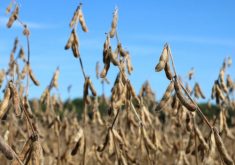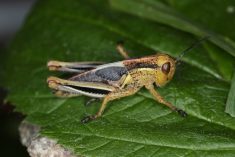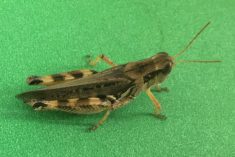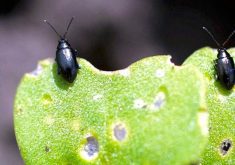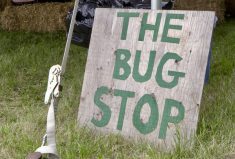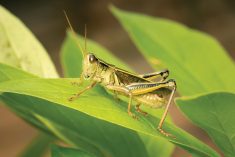It’s not hard to find a farmer who had a grasshopper horror story this year — in fact, some of them have made international headlines, in conjunction with Manitoba’s drought — but now it’s time for the annual count.
Provincial entomologist John Gavloski is once again gathering numbers on Manitoba’s grasshopper population. Results from the annual grasshopper survey, along with weather during the insects’ egg-laying period that year, will be used to create next year’s grasshopper forecast.
Read Also

Still hard to predict precise fertilizer payback
Despite decades of advances, international research finds no clear answer for where and when adding nutrient will fail to boost growth.
“I’m hoping for, I guess, increased uptake,” he said of this year’s survey.
Why it matters: Manitoba’s years-long dry spell has helped support grasshopper pressure, a pest that has seemed to explode this year to cause significant damage in already strained areas of agro-Manitoba.
High grasshopper levels have been among the stresses plaguing Manitoba’s drought-stricken areas this year, with some producers reporting catastrophic damage to already thin forage stands and crops. Grasshopper damage was specifically noted by a long list of Interlake municipalities announcing states of agricultural disaster this summer.
For those watching social media posts, some of which depict waves of grasshoppers moving across lawns and fields, it may come as a surprise that some of Gavloski’s initial data suggests much more patchy populations.
“It’s very variable,” he said. “Even some of the areas like the south Interlake, where we know there’s some higher populations, where we are getting some — I’ll call them higher counts — we’re also getting some very low counts.”
Some noted counts have been as low as zero to one or six to seven grasshoppers per square metre, the data so far says. Others have been reported in the five- to 10- or 10- to 15-per-square-metre range. On the higher end, one count in central Manitoba has come in at over 40 insects per square metre.
The province counts zero to four insects in a square metre as a very light grasshopper population. Counts coming in at four to eight grasshoppers in the same space are considered a light population, eight to 12 are considered moderate, 12 to 24 indicate a severe population, and any region reporting more than 24 grasshoppers per square metre is considered very severe.
Thus far, next year’s map may not be exceptionally different from last year, although Gavloski did say that he expects levels to be “a little bit” higher.
“We have seen some progression over the last few years towards higher levels,” he said. “I expect that to continue, but it’s too early to say how much higher that will be. There’s still data coming in.”
Eyeballing it
“Estimate” is a key word, according to Gavloski, thanks to the adult insects’ tendency to move when a potential sampler gets close.
“We’re not looking for exact counts because it’s impossible to do,” he said. “We’re looking for a good estimate.”
Participants can either count and record an estimated range for a site (say, 20 to 30 grasshoppers per square metre) or take the mean value of that range to report instead.
Provincial Ag Department staff typically gather the bulk of grasshopper survey data, although Gavloski noted that certain agronomists have also helped in the past.
“We always welcome that,” he said. “It’s always nice when the agronomists get involved, especially if there’s areas where they know that there’s some higher grasshopper levels. It’s good to get those counts.”
Farmers were also welcome to submit data points, he added.
A link to proper survey protocol was released during the Aug. 18 weekly pest update, available on the Manitoba Agriculture and Resource Development website, although the window for data collection is now closing.
Sites should be surveyed between the start of August and start of September, according to that protocol.
Standard procedure for counting a single site included five points along a 50-metre strip of field or roadside (whichever area appears to have the highest population). Each point encompassed a square metre, and counts from the five points were then averaged to reach the estimated count for that site.
The province recommended counts be taken at five different sites in a region so that estimates are representative.
If grasshoppers are too thick to be reliably counted in a square metre, the province suggested quartering that footage, and then multiplying counts by four.
Non-pest jumping species like katydids, however, should not have been counted.
For those with a confidant enough eye, the survey also left room to report the dominant species of grasshopper in a field — something that might have a profound impact on what crops are at risk. The province pointed to sweep nets to capture and assess a sample of grasshoppers.
As a final note, participants were also asked to note any significant predator species or signs of fungal infection — grasshoppers found clutching the top part of the plant — that might indicate biocontrol.
Data for the survey that has been collected should be submitted to Gavloski by Sept. 30, the province has said.




